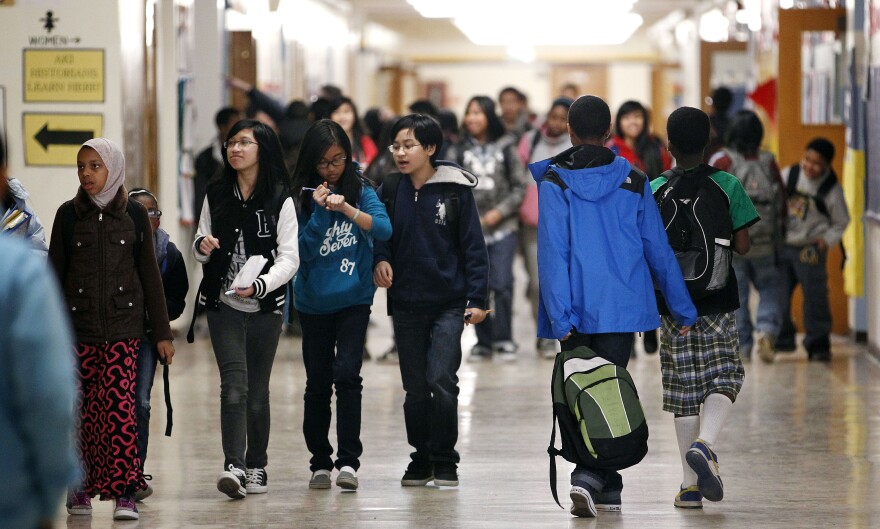Seattle's neighborhoods have become more racially mixed since 1990, but its schools have become more segregated, according to a recent study examining the 100 largest cities in the country.
Ryan Coughlan is an assistant professor of sociology at Guttman Community College, which is part of the City University of New York. He compared neighborhood demographic data with the racial makeup of public schools and found that Seattle has experienced a dramatic increase in school segregation. His study was published in the "Peabody Journal of Education."
“In 1990, only 3 percent of the schools in Seattle would have been classified as intensely segregated, meaning that 90 percent or more of the students in those schools are non-white,” Coughlan said. “Today that number is up to 17 percent.”
Segregation in Seattle decreased by 30 percent between 1990 and 2015 and diversity increased by 13 percent, Coughlan said. He defines diversity as the presence of people of different backgrounds and integration as “the proportional distribution of people of different backgrounds.” For example, he said that in 1990, 23 percent of Seattle’s census tracts would have been classified as “white isolated,” meaning 90 percent or more of residents in those areas were white. In 2015, there were no “white isolated” census tracts.
Coughlan’s study examined the impact of the growth in public-school choice options – for example, charter schools and magnet schools across the country. In Seattle, he didn’t examine charter-school data; charter schools were only approved by voters in 2012 and still educate a tiny percentage of students in Washington state. Nationally, he found that the increase of choice options has exacerbated school segregation, undermining the intent of the landmark 1954 U.S. Supreme Court decision in the Brown v. Board of Education desegregation case.
“An overwhelming majority of cities have experienced increases in neighborhood-level integration while a large majority of schools in their accompanying districts have become increasingly segregated,” Coughlan wrote in his paper. “These divergent patterns in neighborhood and school segregation are cause for alarm.”
Coughlan said the increase in school segregation is concerning because students benefit from attending schools with children of many different backgrounds.
“School integration aligns with significant positive growth for schools, whether we’re measuring test scores or we’re looking at graduation rates, or we’re looking at dropout rates, or we’re looking at more qualitative data on how students feel about their schools and their interactions with their peers,” Coughlan said.
He said there’s no one simple answer why schools have become more segregated at a time when people of different backgrounds are choosing to live in the same neighborhoods.
Some possible reasons why Seattle schools are more segregated now include the district ending its mandatory busing policy, which, according to HistoryLink, the district had instituted in 1972 and continued until 1999. In 2007, the U.S. Supreme Court said in the Parents Involved in Community Schools v. Seattle School District No. 1 case that the district's effort to integrate by using race as a tiebreaker in assigning students to schools was unconstitutional.
Another factor that may play a role in school segregation in Seattle – about 22 percent of school-aged children here attend private school, according to data compiled by Stanford University Professor of Education Sean Reardon.







